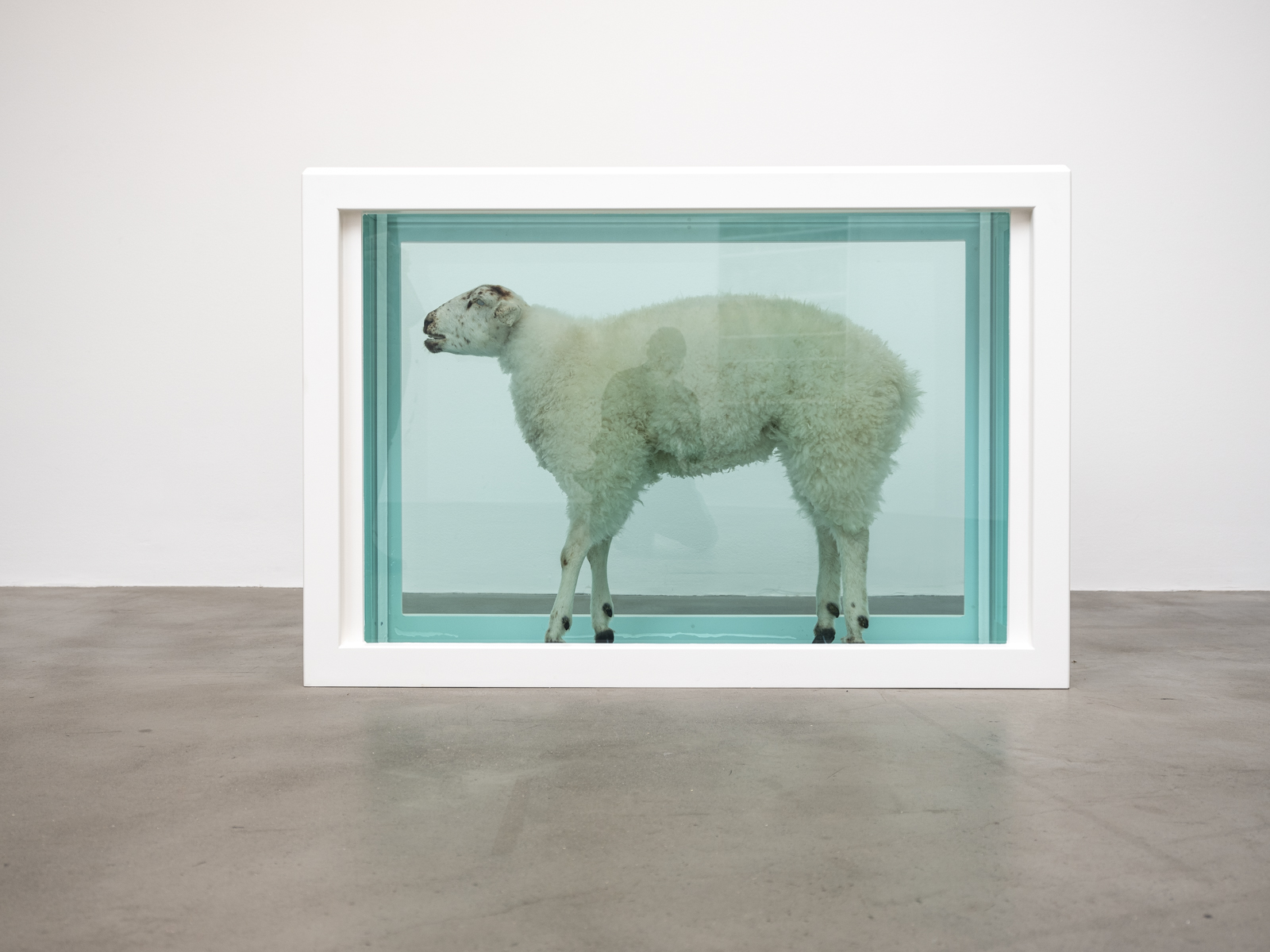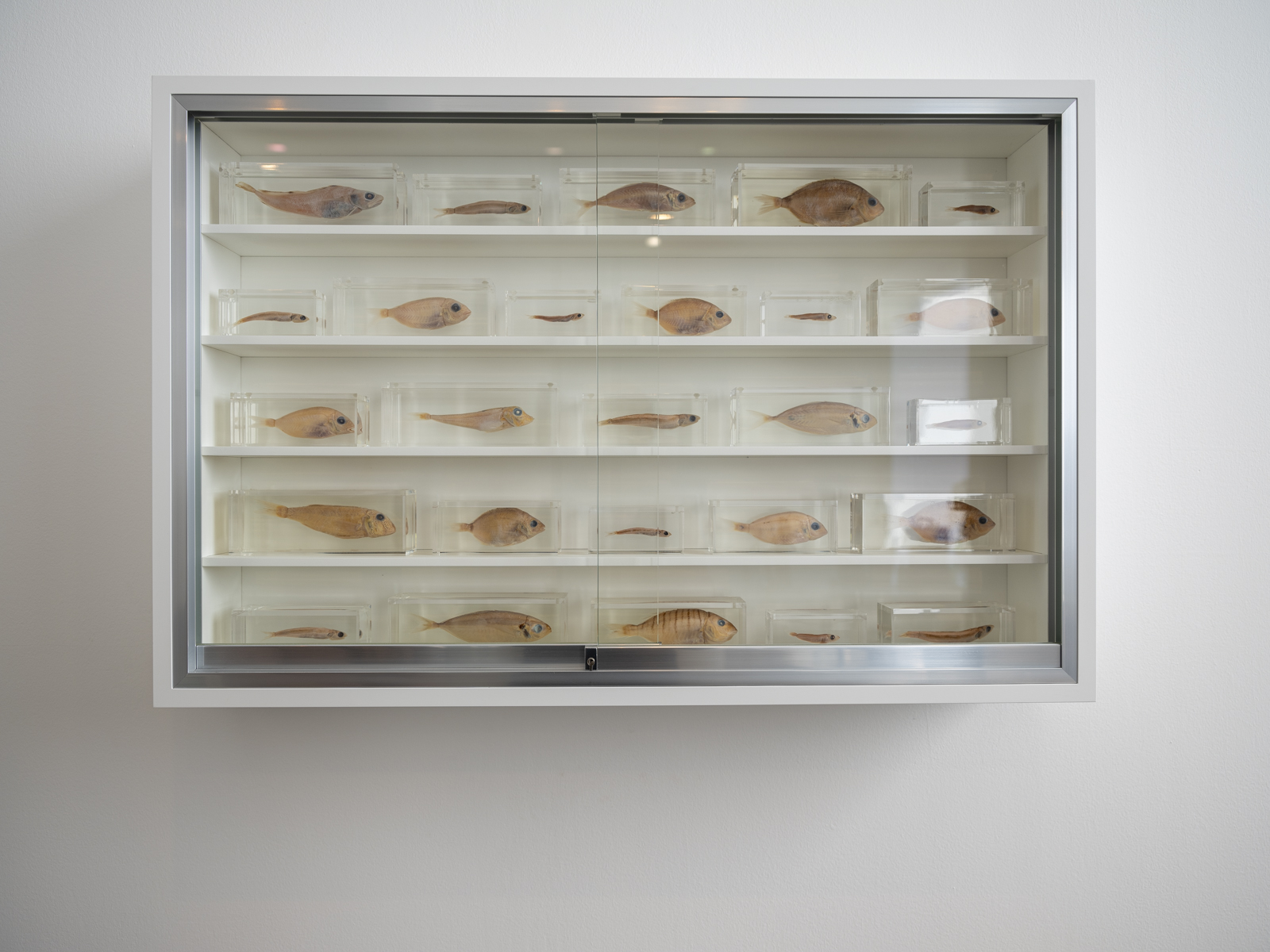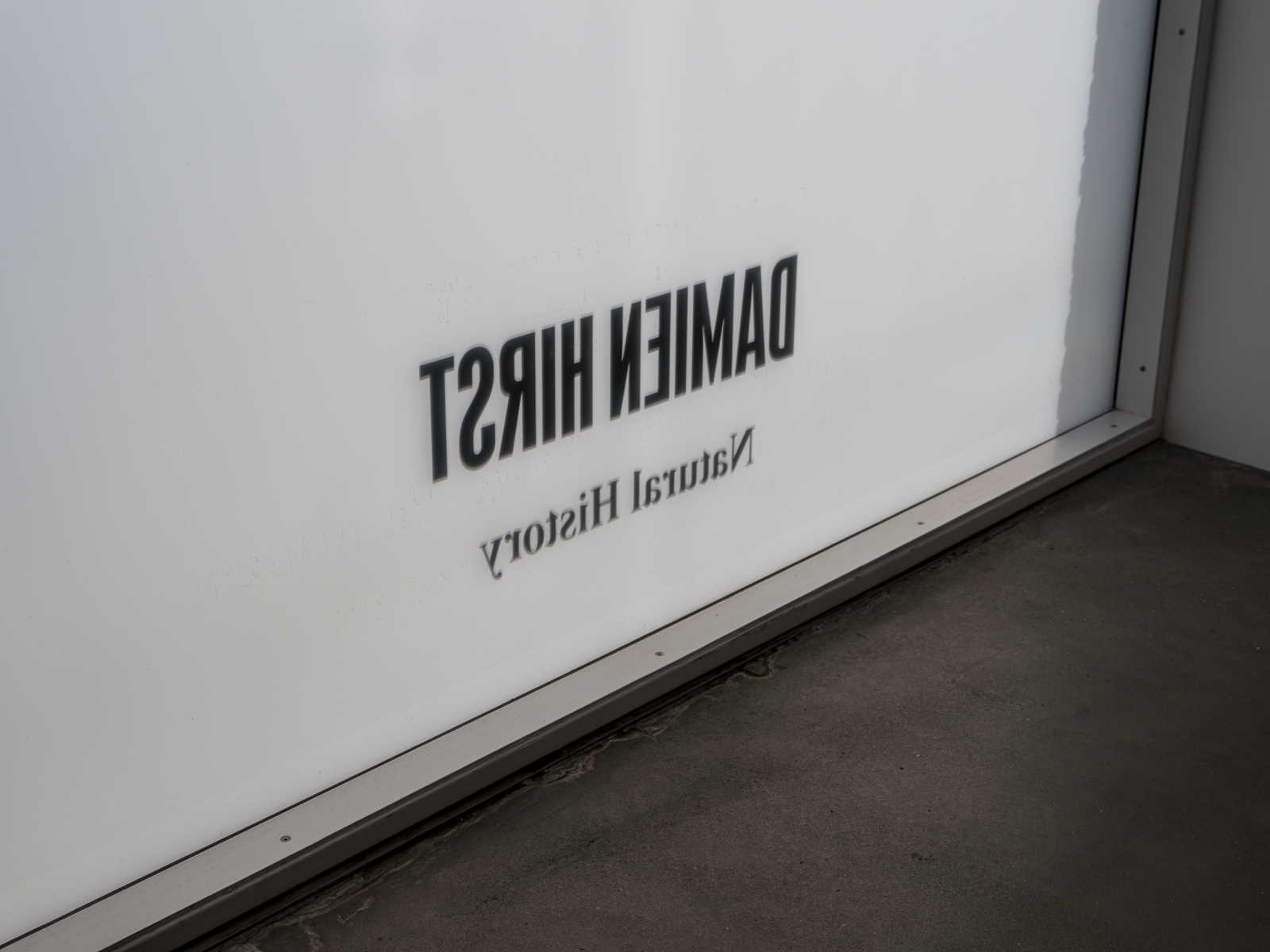TOC
When I speak of Damien Hirst to someone who does not know him, the first approximation I can formulate is “that one with the shark in formalin”. Reducing the career of one of the greatest living British artists to that is probably ungenerous, but the approximation often works. The shark immobilized inside the chemical bath has become an iconic image of contemporary art. I have always found the image in question to be extremely powerful. So you can only imagine my excitement when I learned that some of these works <a href=“https://gagosian.com/exhibitions/2022/damien-hirst-natural-history/"http://google.com")" target="_blank” rel=“noopener noreferrer”>would be exhibited at Gagosian in London. I was lucky this exhibition took place exactly when I was going to be in town for other reasons. This providential coincidence took me away from the embarrassment of having to justify my trip with tanks full of formalin to relatives and friends.
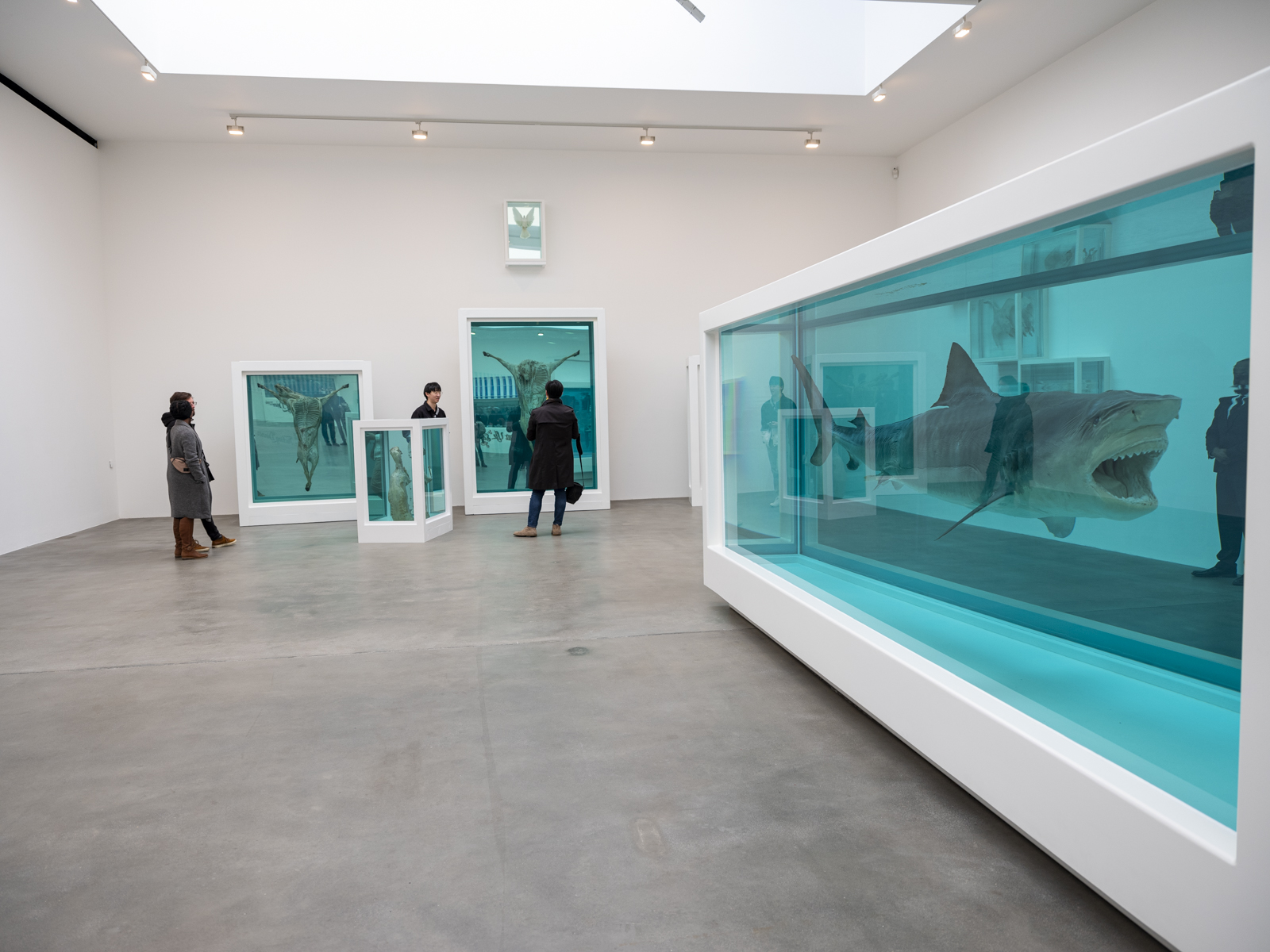
For Hirst, this is a complex moment. He is back from two great performances, which I got to see and describe. <a href=“https://galleriaborghese.beniculturali.it/en/exhibition/damien-hirst/"http://google.com")" target="_blank” rel=“noopener noreferrer”>Archaeology Now is the ideal completion of a meta-historical trend, made up of fake ancient finds and pop culture. <a href=“https://davidecaniatti.com/post/cherry-blossom-by-damien-hirst-at-fondation-cartier/"http://google.com")" target="_blank” rel=“noopener noreferrer”>Cherry Blossom, on the other hand, is something new, perhaps not entirely complete, but with immense potential. It is an art steeped in escapism and beauty for bad and claustrophobic times. In the meantime, however, there was also the scandal of the skull studded with diamonds, <a href=“https://news.artnet.com/art-world/damien-hirst-skull-storage-2064567"http://google.com")" target="_blank” rel=“noopener noreferrer”>never really sold at the monstrous figure that was talked about. Hirst sometimes runs the risk of being famous because he is famous, but he is aware of it, and in recent years he has played with it extensively. This exhibition, organized with no advance notice and which I only learned about thanks to the artist’s Instagram profile, comes as a piece to cover the controversies of recent months. Ideally, he wants to remind the public that we are not dealing with just any provocateur, but with an artist who can boast 30 years of success.
It is interesting how this concept of formalin (or formaldehyde, to be precise) is now so long-lived. I wanted a shark that’s big enough to eat you, and in a large enough amount of liquid so that you could imagine you were in there with it says Hirst talking about his shark. It is difficult not to make this association of thought because, although the exhibit features only animals, it is almost natural to think of a person in their place. So what does the author want to tell us? Without putting words in his mouth, what follows is my humble interpretation. Hirst is obsessed, like many, with the great themes of Western thought: death, faith, nihilism, and existence. His work of preserving him is almost repairing a wrong, stopping the time that inevitably undoes things. The original shark was titled The Physical Impossibility of Death in the Mind of Someone Living and is a fitting title for a work where not even the subject is clear: will it be the animal shark? The shark icon of strength/fear? Or is it formalin rather, or is it us?
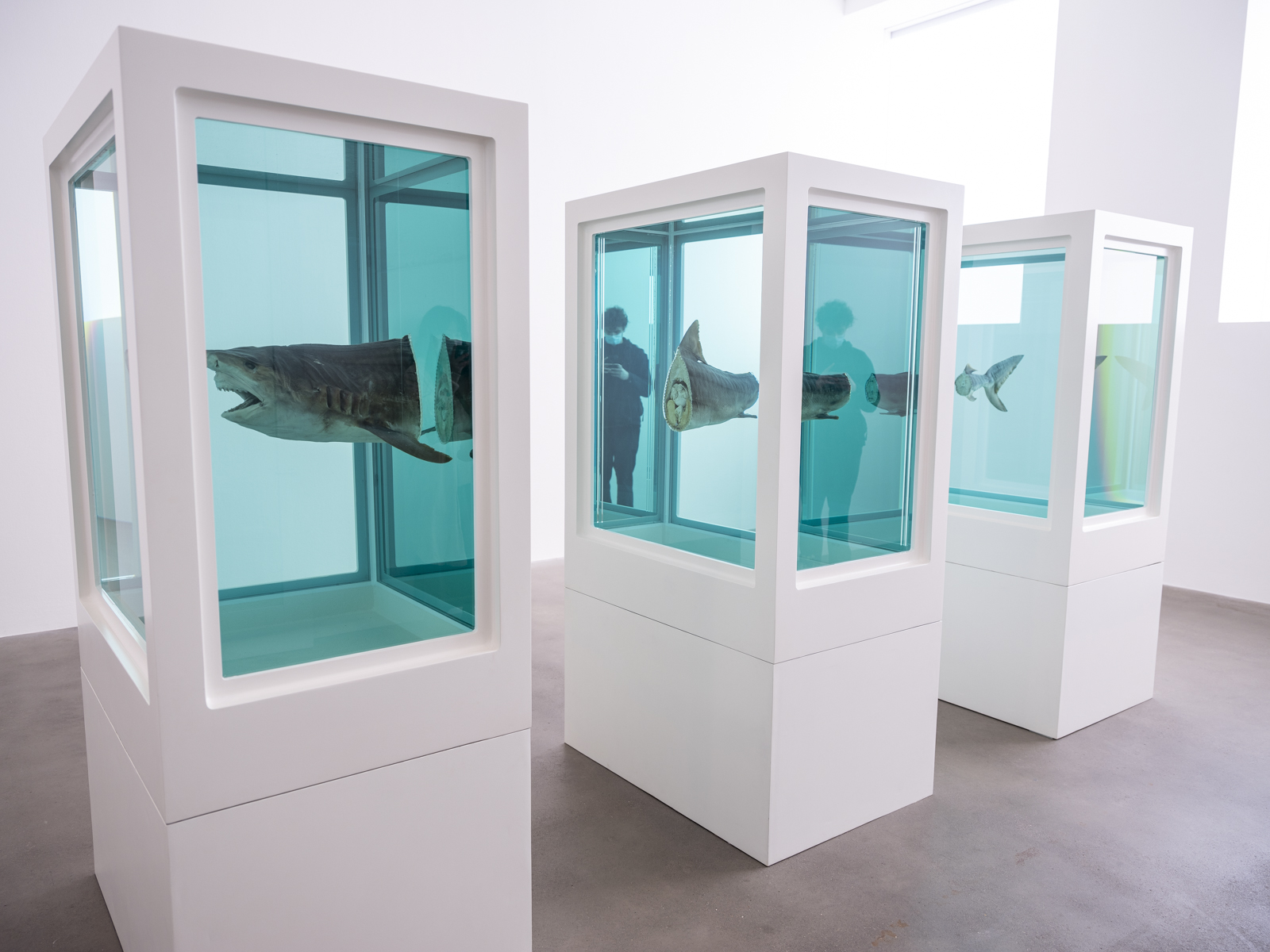
One of the early sharks from 1993.
There are no simple answers, indeed, there are probably no answers at all, but I find the premise acceptable. I understand the author’s rage toward the human condition. But be careful: it is not just a desire to rebel against physical death, but to stop the very effects of decay. Even if we are brave enough not to fear our annihilation, how can we endure it in our loved ones? And even if we were detached enough from everyone not to fear it, how can we bear it in the beauty that surrounds us? Isn’t the idea that in 100, 1.1000 or 10.000 something like Michelangelo’s Last Judgment will no longer exist enough to keep us awake at night? Or worse still, the idea that between all that time there will be something equally beautiful and that we will not be able to see does not make us very sad? Hirst tries to rebel against this, sealing his creatures and mythologies in formalin. It is not just about animals, but from how the titles of entire myths suggest. On one side we find Cain and Abel, on the other the Baptist, up to a triptych reminiscent of a Renaissance crucifixion.

Now, before expressing a judgment on the exhibition, we must ask ourselves a question: are they beautiful works? Here we enter into the personal judgment realm, yet in my opinion, despite their crudeness, they are. Or they are beautiful because of their cruelty. A perfectly preserved sheep is beautiful because that animal is beautiful and it is almost tender that someone has thought of keeping it. But they are also terrible works because they are animals that have been killed and torn to pieces, before ending up on display for our entertainment. The gallery staff swears that they were animals that died for other causes or were not bred/killed for that purpose, but it remains a violent sight. Even exposing them in such an aseptic way, as an 18th-century wunderkammer, is not enough to make them less strong. Indeed, the title is almost provocative: because it is not a natural story, but a human one that we have in front of us. Every story for Hirst is necessarily a human story, even if we go to use animals as a pretext to portray it. In doing so, we cover our stories and hide them under a layer of “naturalness” with which we justify them.
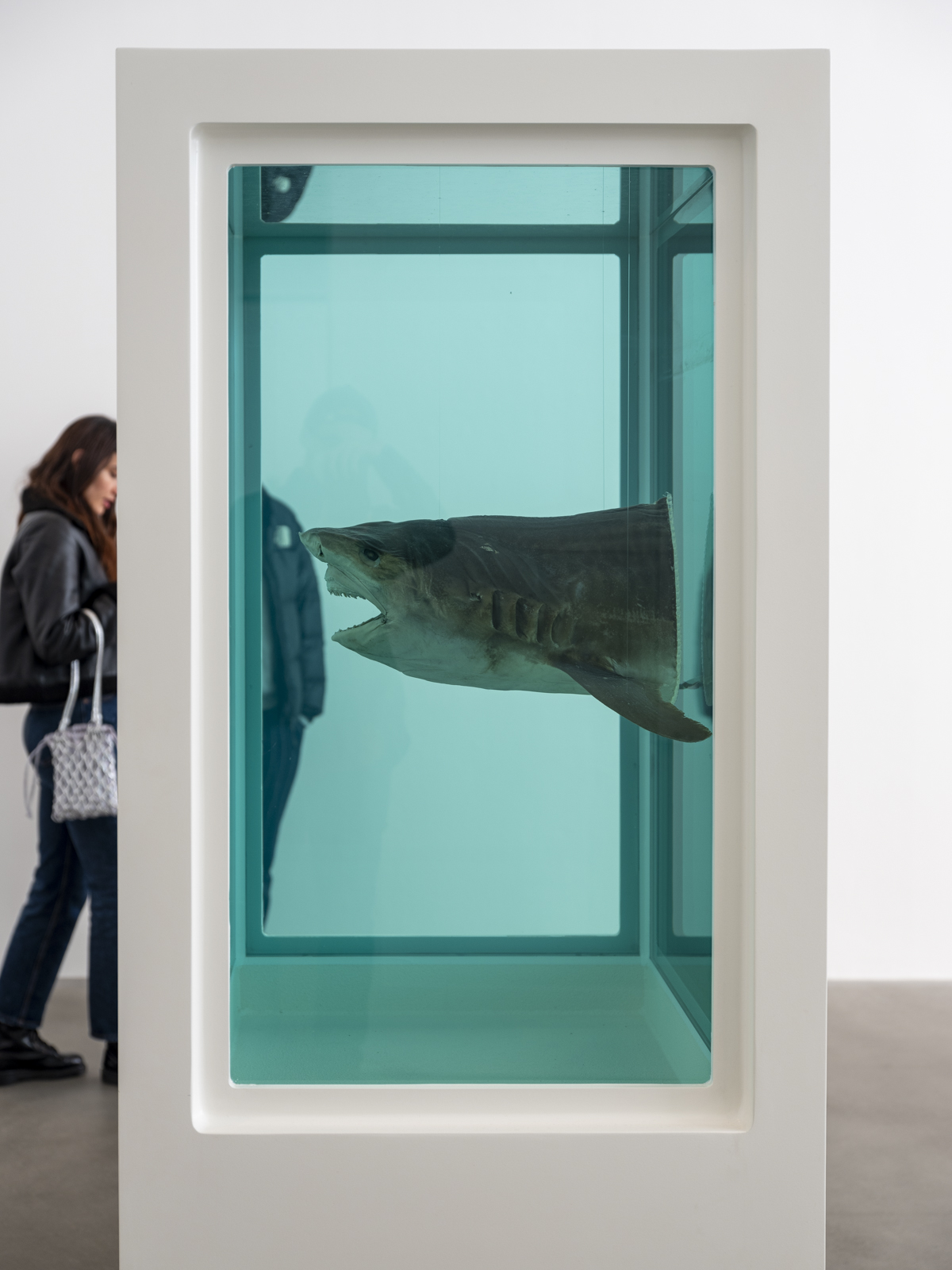
As for judgment, the answer is complicated. You do not leave the exhibition with that serenity that Cherry Blossom transmitted, but with a sense of suspension, almost of annoyance. The greatest criticism can perhaps be made of the initial premise, rather than its realization. I understand that in people who do not share Hirst’s vision such installations may not resonate. Many people are perfectly convinced that a lifetime is enough and that there is no point in trying to anchor things that by their nature flow away, including people. Towards this position I have a mixture of admiration and fear; therefore, I understand the artist’s efforts to try to preserve things. After all, it has been one of the “works” in art over the centuries. What prompted those cavemen and women to leave the imprint of their hands on a cave wall if not the desire to exist for a longer time than their lives? This is probably a futile attempt, now as it was then, but no less deserving of prosecution.
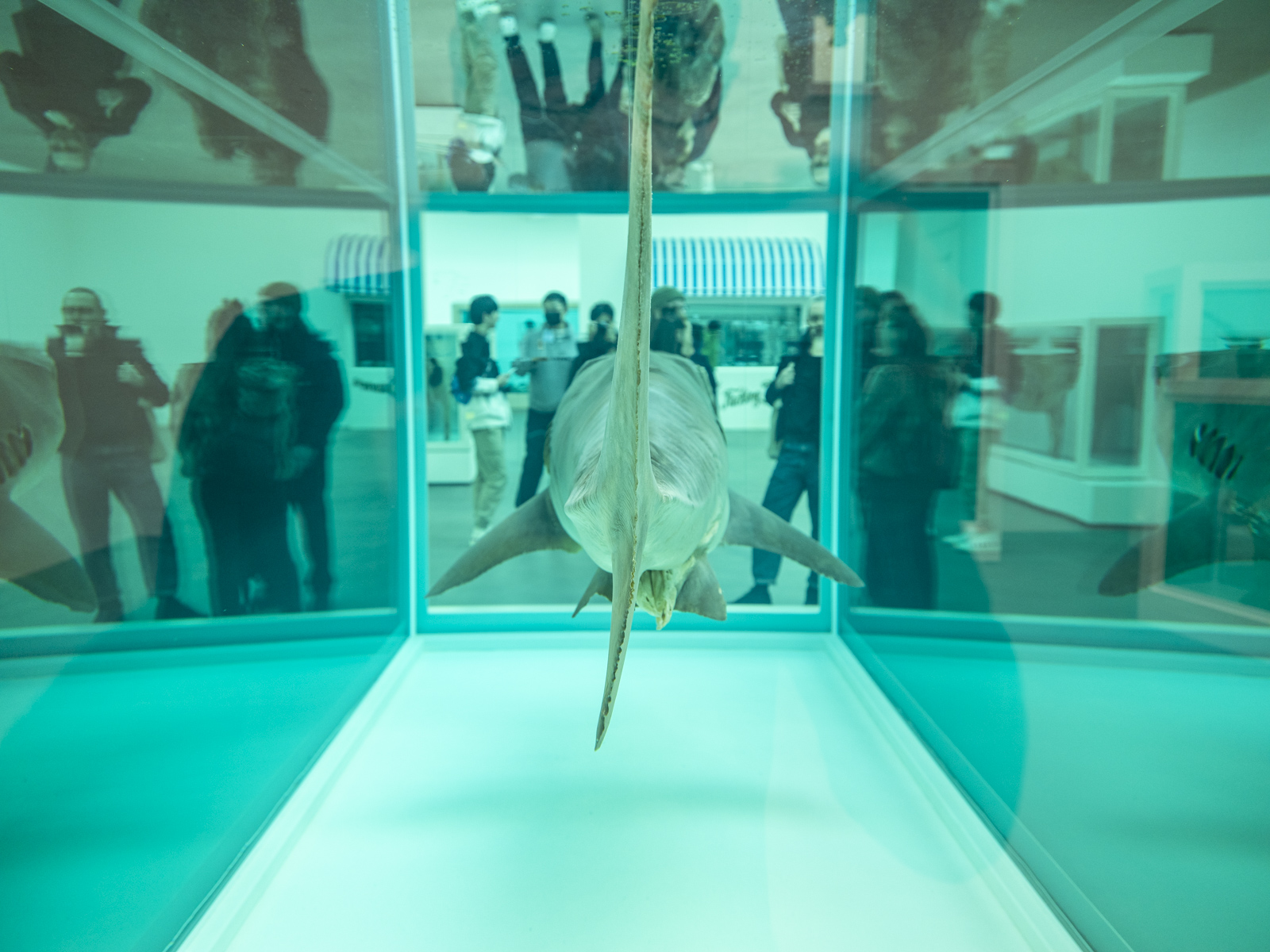
We do not know if Hirst’s work will last over time and for how long. What we can consider, however, is that the first pieces on display are over 30 years old. Three decades may seem short, but they are an almost geological time in contemporary art and in the society in which we live. Certainly, Hirst is managing to keep himself as an artist in the formalin of his display tanks, something of which - I think - he must be extremely proud.
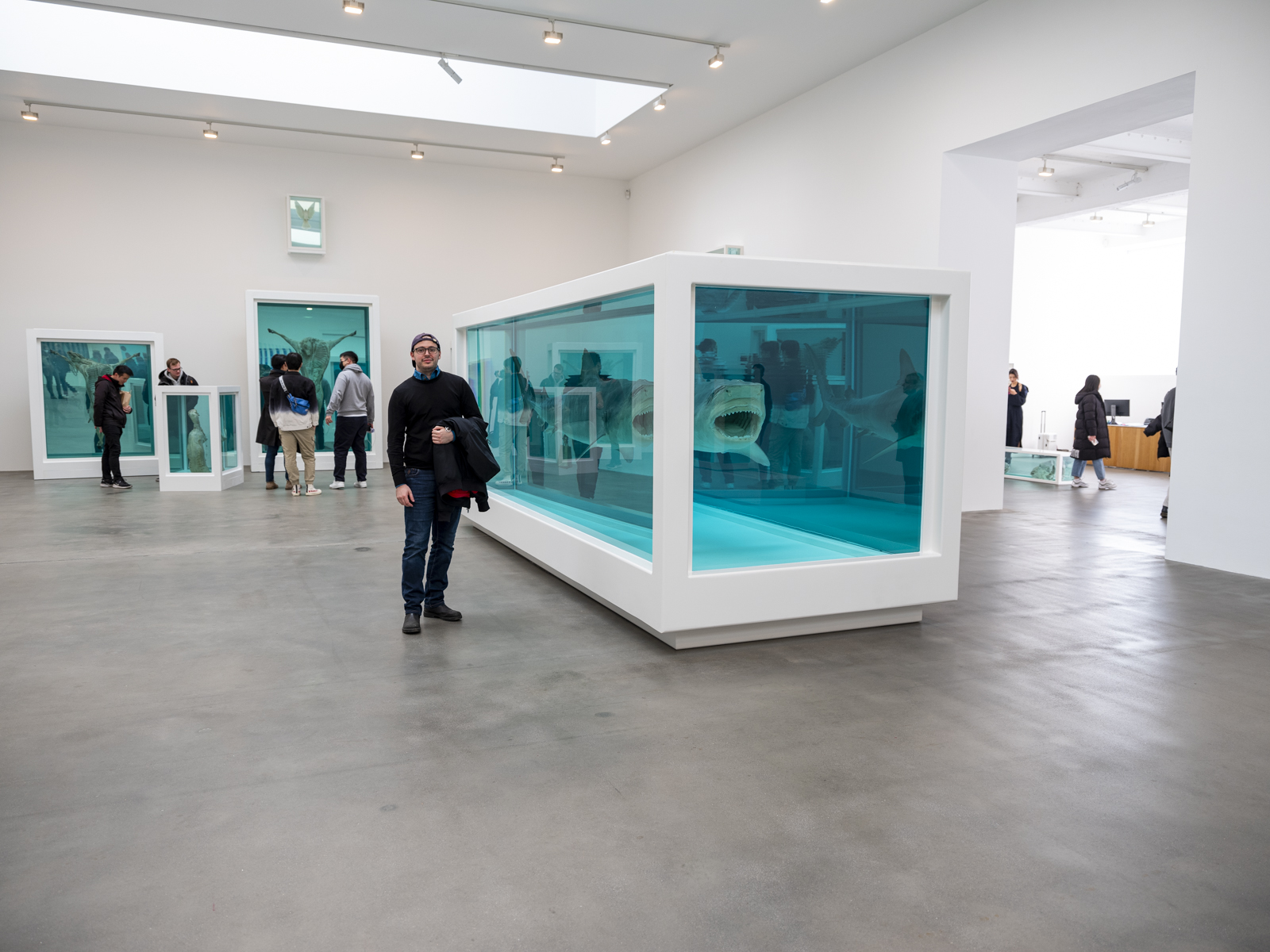
The author of this article, quite happy to be there!
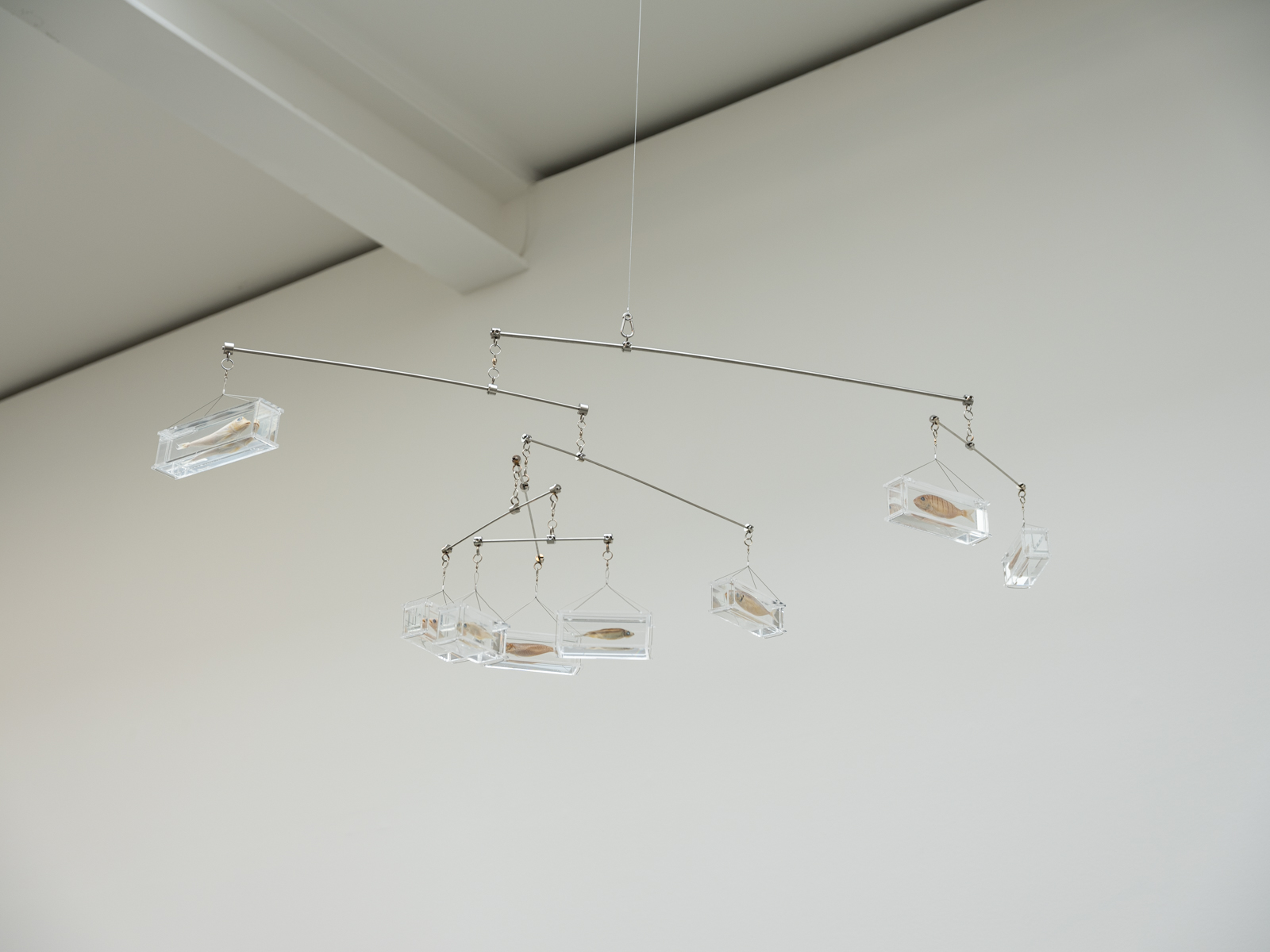
Hirst wants to be sure that you know that he like Mirò!
